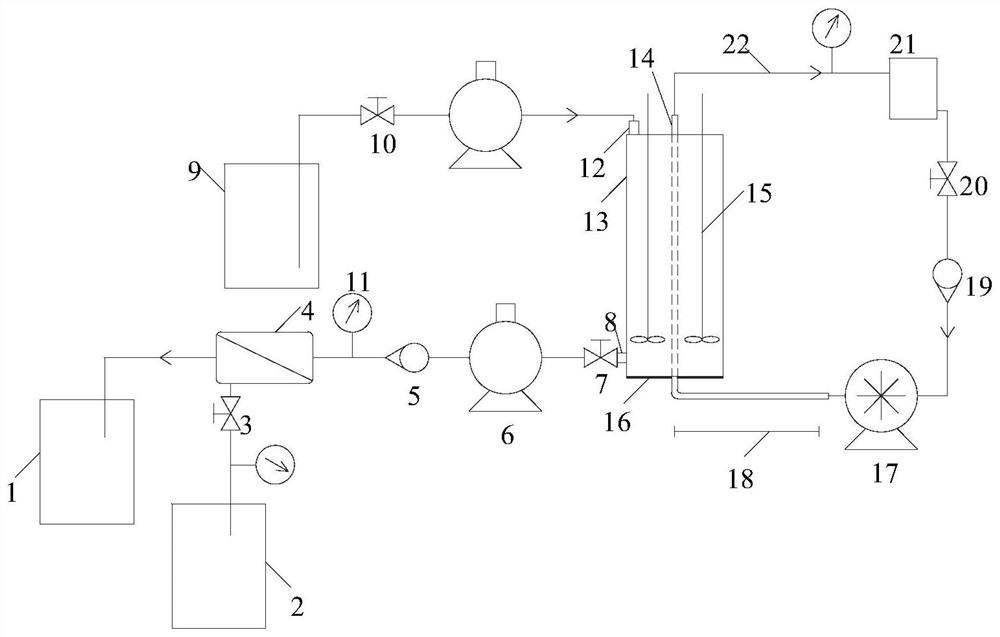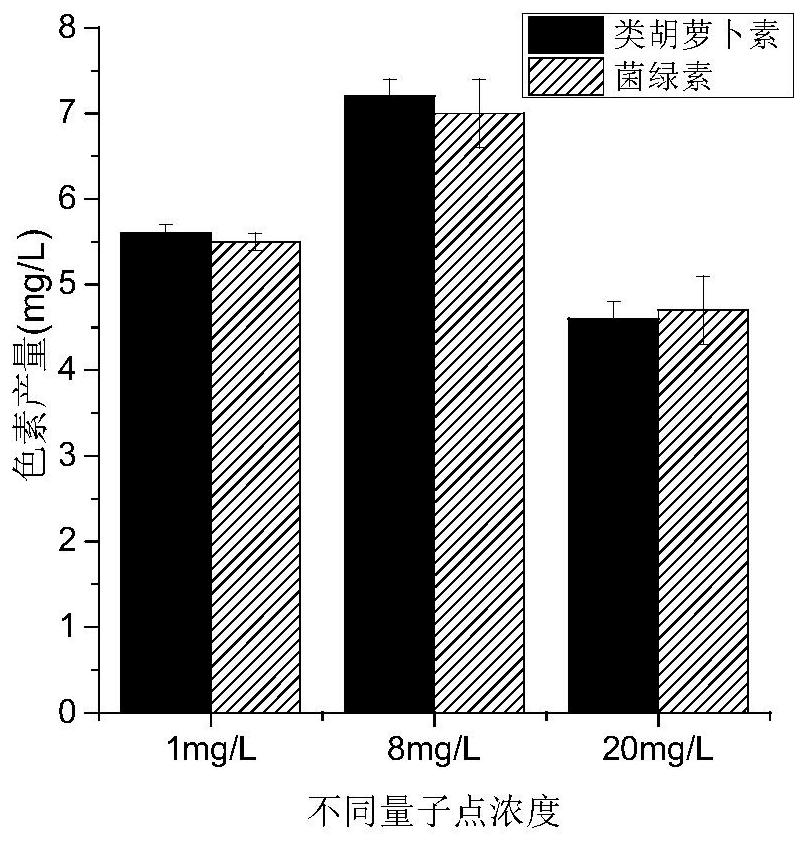Method and device for treating wastewater and producing nutrients
A technology for treating waste water and nutrients, which is applied in the field of waste water recycling, and can solve problems such as large power consumption, short service life, and low luminous efficiency of incandescent lamps
- Summary
- Abstract
- Description
- Claims
- Application Information
AI Technical Summary
Problems solved by technology
Method used
Image
Examples
Embodiment 1
[0047] see figure 1 , a device for treating wastewater using graphene quantum dots, comprising a photosynthetic bacteria photobioreactor 13, a quartz tube 14, a silica gel tube 22, and an ultraviolet lamp 18;
[0048] The photosynthetic bacteria photobioreactor 13 is a cuboid container made of plexiglass, and the quartz tube 14 is vertically arranged in the photosynthetic bacteria photobioreactor 13 center, and the lower end of the quartz tube is the inlet of the graphene quantum dot solution, and the upper end is the graphene quantum dot solution. The outlet of the dot solution, the inlet and the outlet are connected to the silica gel tube 22 to form a circulation loop of the graphene quantum dot solution; the circulation loop is provided with a peristaltic pump 17, a liquid flow meter 19, a flow control valve 20 and a circulation fluid buffer chamber 21;
[0049] An ultraviolet lamp 18 is placed at the section where the silicone tube connects to the inlet; a shading cloth 16...
Embodiment 2
[0053] Embodiment 2 Comparison test of different light conditions
[0054] 1) Adjust the concentration of wastewater so that COD is 6500mg / L; add nitrogen and phosphorus sources to adjust the carbon-nitrogen-phosphorus ratio in wastewater to 200:5:1 (according to the optimal carbon-nitrogen ratio of traditional wastewater biological treatment method as a basis );
[0055] 2) Inoculate Rhodopseudomonas palustris (single species) in the logarithmic growth phase with an inoculation amount of 200-500mg / L dry weight in the wastewater, and adjust the pH value to 6.8-7.0;
[0056] 3) Use ultraviolet rays with a wavelength of 365nm as excitation light to continuously irradiate the graphene quantum dot solution, so that the graphene quantum dots in it absorb energy, and the electrons transition from a high energy level back to the ground state and emit fluorescence with a wavelength of 550-620nm as a light source for the growth of photosynthetic bacteria ; The wastewater inoculated wi...
Embodiment 3
[0060] Embodiment 3 quantum dot concentration optimization test
[0061] Based on the results of Example 2, quantum dots were used as light sources, and different quantum dot concentrations were set, and other operations were the same as in Example 2. image 3 Experimental results are processed for different quantum dot concentrations (abscissa is quantum dot concentration).
[0062] The biomass of 1860.5mg / L and the COD removal rate of 70.3% were obtained in the group whose quantum dot concentration was 8mg / L. In addition, the production of carotenoids increased by 27.6% and 53.9% compared with the other two groups; the production of bacteriochlorophyll increased by 28.3% and 46.6%.
PUM
| Property | Measurement | Unit |
|---|---|---|
| diameter | aaaaa | aaaaa |
| particle diameter | aaaaa | aaaaa |
Abstract
Description
Claims
Application Information
 Login to View More
Login to View More - R&D
- Intellectual Property
- Life Sciences
- Materials
- Tech Scout
- Unparalleled Data Quality
- Higher Quality Content
- 60% Fewer Hallucinations
Browse by: Latest US Patents, China's latest patents, Technical Efficacy Thesaurus, Application Domain, Technology Topic, Popular Technical Reports.
© 2025 PatSnap. All rights reserved.Legal|Privacy policy|Modern Slavery Act Transparency Statement|Sitemap|About US| Contact US: help@patsnap.com



